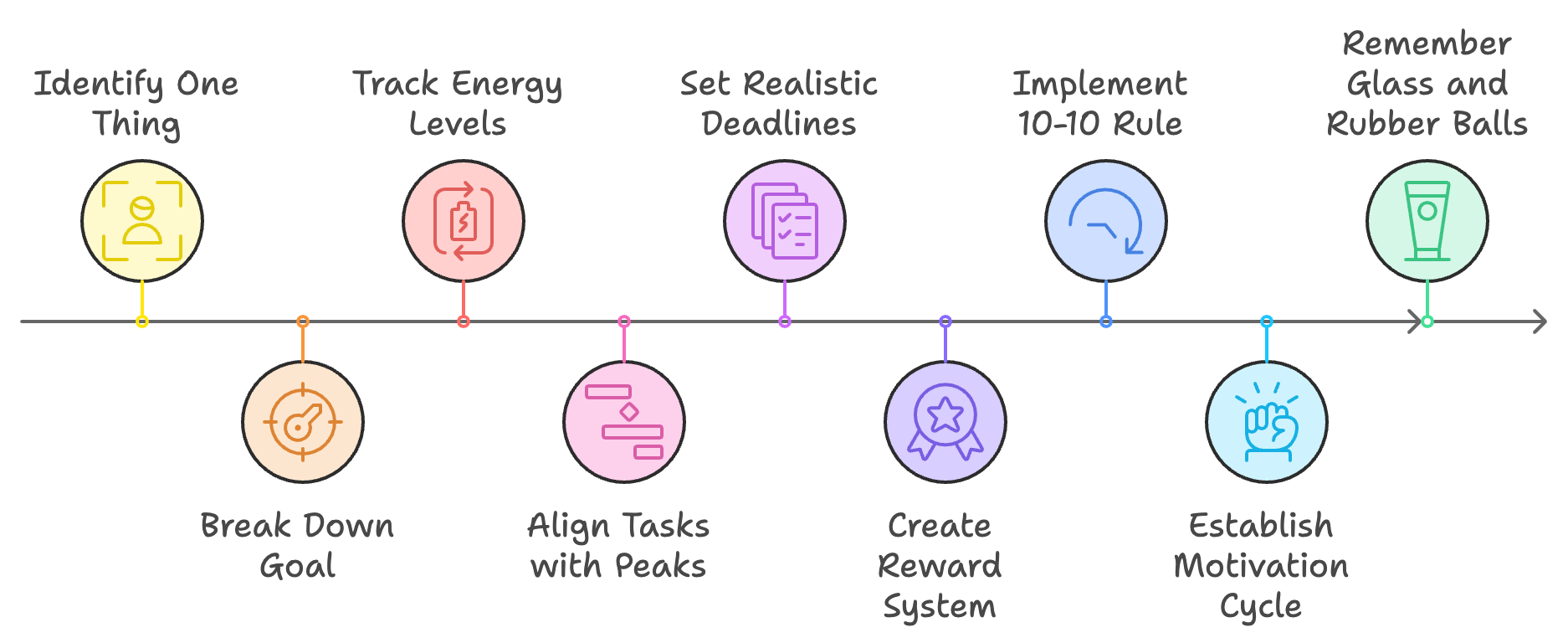Take control of your energy: A step-by-step guide for increased productivity
Learn effective energy management techniques to boost productivity. This step-by-step guide provides practical strategies to optimize your energy levels and achieve your goals.
Do you ever feel like you're constantly running, yet never seem to catch up? Do you dream of accomplishing more, but struggle to find the time and energy? You're not alone. Many people feel overwhelmed by the demands of modern life, juggling work, family, personal goals, and everything in between. This guide offers a practical, step-by-step approach to energy management, empowering you to take control of your time and boost your productivity. By mastering these principles, you can achieve more, stress less, and find more time for the things you truly value.
What is Energy Management?
Energy management isn't just about squeezing more hours into the day; it's about understanding and optimizing your energy levels to work smarter, not harder. It involves strategically aligning your tasks with your natural rhythms, prioritizing effectively, and cultivating habits that support sustained focus and motivation. This guide, inspired by productivity experts and research, provides a comprehensive framework to help you do just that.
Prerequisites:
- A Notebook and Pen: For tracking your energy levels and planning your tasks
- A Large Sheet of Paper or Poster Board: For visualizing your yearly goal
- Sticky Notes: For brainstorming and breaking down your goal into smaller steps
- An Open Mind: Be ready to experiment and find what works best for you

Step 1: Identify Your "One Thing"
Instead of scattering your energy across multiple goals, focus on the single most important objective you want to achieve this year. Ask yourself: "If I could only accomplish one thing this year, what would it be?" Write this goal on your large sheet of paper and hang it somewhere visible as a constant reminder.
Step 2: Break Down Your Goal (Think Big, Limit Your Opportunities)
Using sticky notes, brainstorm actionable steps you can take each month to move closer to your yearly goal. Don't be afraid to think big and then break those ambitious plans into manageable chunks. Stick these notes around your main goal on the poster board. This creates a visual roadmap for your year.
Step 3: Track Your Energy Levels (Take Advantage of the Unequal Hours)
For one week, observe your energy levels throughout the day. Note when you feel most alert, focused, and productive, and when you experience energy dips. Are you a morning person, a night owl, or somewhere in between? Record your observations in your notebook. This awareness is crucial for scheduling tasks strategically.
Step 4: Align Tasks with Your Energy Peaks
Now that you know your peak productivity times, schedule your most demanding tasks for those periods. Reserve less demanding tasks for times when your energy naturally wanes. For example, if you're a morning person, tackle your most challenging project first thing.
Step 5: Set Realistic Deadlines (Good is Better than Perfect)
Avoid the trap of perfectionism. Set realistic deadlines, even slightly shorter ones than you think you need, to create a sense of urgency and avoid procrastination. Remember, done is better than perfect. Focus on progress, not perfection.
Step 6: Create a Reward System (Pay Yourself When You Procrastinate)
Identify what motivates you and create a reward system to incentivize yourself to complete tasks, especially those you tend to procrastinate on. This could be anything from enjoying a treat after finishing a challenging task to taking a break in your favorite spot.
Step 7: Implement the 10-10 Rule (Use the 10-10 Rule to Deal with Chaos)
When faced with distractions or competing priorities, ask yourself: "How will I feel about this in 10 minutes? 10 weeks? 10 years?" This helps you maintain perspective, prioritize effectively, and minimize decision fatigue.
Step 8: Establish a Motivation Cycle
- Visualize your annual goal (the poster board)
- Set monthly goals and key performance indicators (KPIs) based on the sticky notes
- Leading indicators (actions)
- Lagging indicators (results)
- Create weekly plans aligning tasks with your energy levels
- Manage your daily energy by sticking to your plan as much as possible
Step 9: Remember the Glass and Rubber Balls
While productivity is important, remember to prioritize your well-being, relationships, and values. Work is often the rubber ball that can bounce back, while other aspects of life are more fragile. Maintain a healthy balance and don't sacrifice what truly matters.
Troubleshooting Tips:
- Feeling Overwhelmed: Revisit your "one thing" and ensure you're not trying to do too much
- Struggling with Motivation: Adjust your reward system or revisit your "why"
- Difficulty Tracking Energy Levels: Experiment with different tracking methods
- Distractions: Identify your biggest distractions and implement strategies to minimize them
Conclusion and Next Steps:
Congratulations on taking the first steps towards mastering energy management! By implementing these principles, you'll gain control of your time, boost your productivity, and create more space for the things you truly value. Remember that this is a journey, not a destination. Experiment, adapt, and continue to refine your approach to find what works best for you.